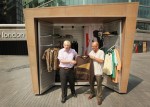
Market Basket Analysis
Market Basket Analysis (MBA) is a data mining technique that helps a retailer in several ways. Let us have a first look at the basics of MBA and I’ll reserve the benefits it offers to a retailer for my next post. In a basic fashion, if we want to define MBA, it is the analysis of a shopping basket or a ticket to determine the association or relationship between different SKUs. For instance, there may be an observable purchase pattern that says – whenever a person buys a pack of bread, she may buy a pack of eggs as well. To understand this better, we need to be aware of 2 terminologies namely Support & Confidence. Let us say,
IF (Shopping Basket contains = Bread), THEN Shopping Basket contains Eggs.
The first portion is called the support, ie the frequency with which Bread is bought. The second part is the Confidence, ie the frequency with which Eggs are bought whenever Bread is bought. If we wish to bring some numbers, assume that a store has 100 shopping tickets in a week, containing bread as one of the SKUs purchased. Out of these 100 tickets, 75 tickets have eggs as well. This means that there is a close association between Eggs and bread. (75% of whenever bread is purchased, eggs are purchased too).
One oft-quoted example is the case of Walmart, who determined that there is a close association between the purchase of baby diapers and beer cans. One can find the reason behind this in quite a few websites. But the point is that, many a times, the associations may be out of the reach of a retailer’s imagination. Thus, using a proper IT system to determine such associations is very essential. Now let us see a preliminary method to determine such associations.
First and foremost, the retailer should capture all the transactional data from the POS. In every shopping ticket, we can compare all the SKUs with all the other SKUs. If we do this exercise for all the shopping tickets over a period of time(say 12 months), we can identify different combinations of SKUs which occur more frequently in many shopping tickets. (We can perform a similar analysis for every customer, instead of every shopping ticket, if we want to solicit suitable offers for customers). We can sort the different combinations of SKUs in the descending order of their frequency. Now for each high frequency combination, we have to find out the number of tickets (or customers) that bought only one of these 2 items. Then we can determine, if there is a strong potential to sell the other SKU as well to those customers who bought only one of those SKUs. The result of our preliminary analysis will look something like:
This states that Bread & Eggs were bought 550 times together, but Bread was bought for a total of 700 times. Ie., There is a scope for selling Eggs 150 more times, than the normal sales.
This is a very elementary analysis, just to explain the basics. In real world, MBA can be far more complex. The reasons for complexity are as follows:
- The association need not be always 1 to 1. It can be 2 to 1 or 3 to 1. For instance, in our eggs & bread example, the purchase pattern can be something like:
IF (Shopping Basket contains – Bread & Cheese), THEN Shopping Basket contains Eggs. (Bread & Cheese, instead of Bread alone)
- The association can be dependent on the demographics of the consumer – For example, the association between Pepsi & Chips is strongly felt only when the purchaser is a male. Another example could be – The association between Noodles & Ketchup is strongly felt only in stores located in down-town and not in sub-urban region.
- The association can be dependent on the day of the week or season of the year. For example, there can be a strong association between Pepsi & Chips only on a Friday evening. There can be a strong association between paper plates and donuts only on the first 3 weeks of a spring season.
I hope this gives some basic idea about Market Basket Analysis. Let us delve into the benefits that this can offer to a retailer in the next post.
















